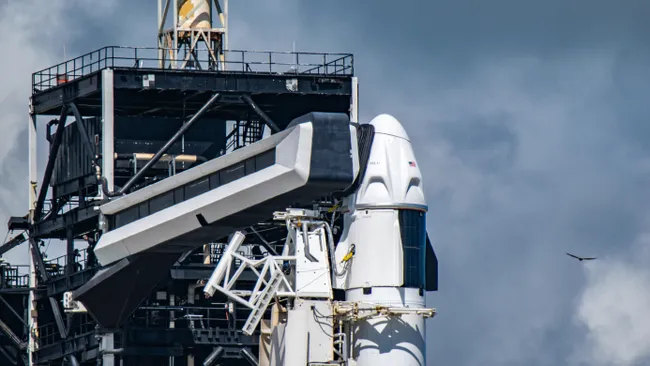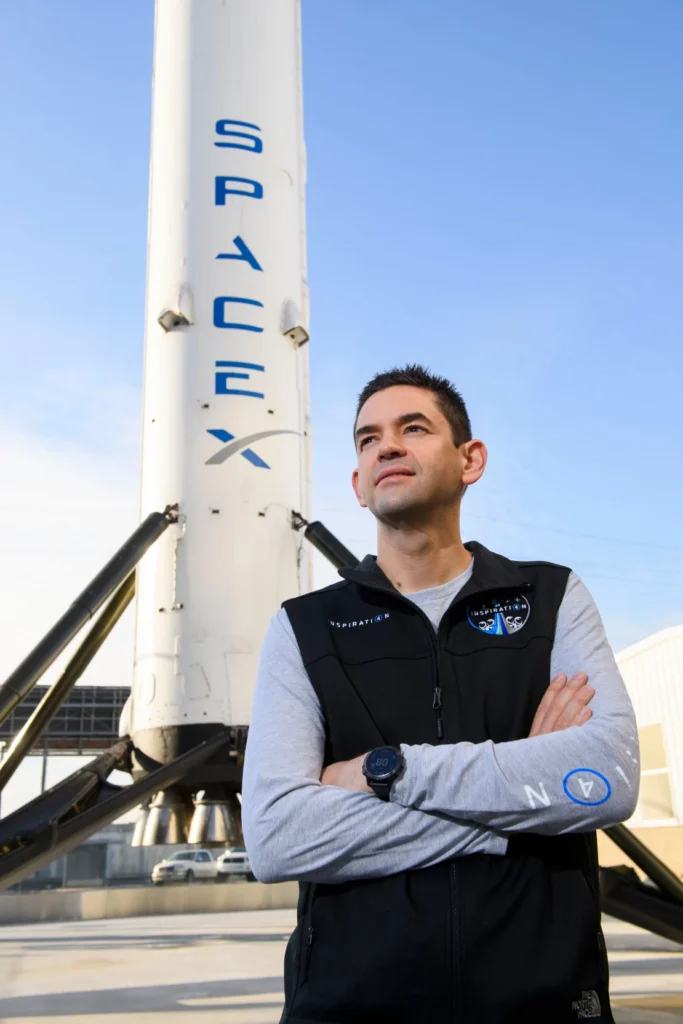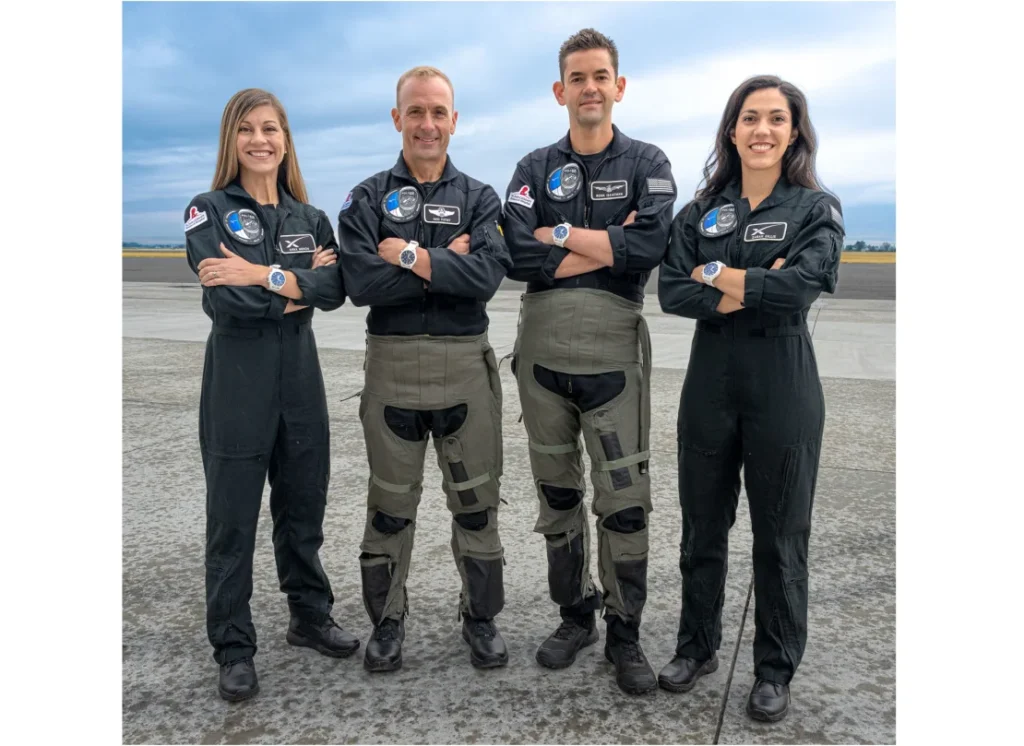SpaceX’s Polaris Dawn: A Bold Leap into the Future of Space Exploration
Introduction
SpaceX, under the visionary leadership of Elon Musk, continues to push the boundaries of space exploration, setting new standards with each mission. Their upcoming Polaris Dawn mission is no exception. This mission is poised to be a historic event in human spaceflight, featuring a crew of four experienced astronauts, a series of cutting-edge experiments, and a focus on advancing the capabilities of SpaceX’s Falcon 9 rocket and Dragon spacecraft. As SpaceX takes this bold step forward, Polaris Dawn represents more than just another space mission—it is a leap into the future, shaping the path toward Mars, the Moon, and beyond.

Mission Objectives: A Multi-Faceted Approach
Polaris Dawn is meticulously planned to achieve several key objectives, each designed to further human space exploration:
- High-Altitude Orbit Testing: One of the primary goals of Polaris Dawn is to test the Dragon spacecraft in a high-altitude orbit, far higher than previous SpaceX missions. This mission serves as a precursor to SpaceX’s ambitious Starship program, which aims to send humans to the Moon, Mars, and eventually establish a permanent presence there. The data gathered will inform the design and functionality of the Starship, ensuring that it can withstand the harsh conditions of deep space.
- Scientific Experimentation: Polaris Dawn isn’t just about technological advancements; it’s also a platform for scientific research. The mission will carry a suite of experiments focusing on space medicine, environmental monitoring, and technology demonstrations. These experiments are crucial for understanding the effects of space on human health, the Earth’s environment, and the development of new technologies essential for future space missions.
- Commercial Spaceflight Demonstration: Perhaps one of the most significant aspects of Polaris Dawn is its role in demonstrating the viability of commercial spaceflight. By partnering with private companies and organizations, SpaceX is showcasing the potential of the commercial sector to drive innovation in space exploration. This mission is not just about scientific discovery; it’s about proving that commercial space ventures can successfully carry out complex missions, laying the groundwork for an economy that extends beyond Earth.

The Polaris Dawn Crew: Pioneers of the New Space Age
The success of Polaris Dawn hinges on the expertise and experience of its crew. Each member brings a unique set of skills that will be crucial in achieving the mission’s objectives:
- Jared Isaacman (Mission Commander): A self-made billionaire entrepreneur and philanthropist, Jared Isaacman is no stranger to space missions. He previously led the Inspiration4 mission, the first all-civilian mission to orbit, which raised over $240 million for St. Jude Children’s Research Hospital. His leadership on Polaris Dawn is driven by his passion for pushing human boundaries and his commitment to philanthropy.

- Scott Pote (Mission Pilot): A former U.S. Air Force fighter pilot and seasoned commercial astronaut, Scott Pote’s experience in high-pressure, high-stakes environments makes him an invaluable asset to the Polaris Dawn mission. His role as the mission pilot will involve navigating the spacecraft and ensuring the successful completion of orbital maneuvers.

- Sarah Gill (Mission Specialist): With a background as a physician assistant and former U.S. Air Force flight surgeon, Sarah Gill’s expertise lies in space medicine. She will be responsible for the health and well-being of the crew, conducting vital medical experiments that will provide insights into how the human body adapts to space environments.

- Anna Kikina (Guest Astronaut): As a Russian cosmonaut and the first Russian woman to fly on a commercial spacecraft, Anna Kikina represents a significant milestone in international space collaboration. Her participation in Polaris Dawn highlights the increasing cooperation between nations in space exploration, even as global tensions rise.

Mission Timeline: A Journey to the Edge of Space
The Polaris Dawn mission is slated to launch from NASA’s Kennedy Space Center in Florida between 3:38 and 7:09 a.m. ET on Wednesday. This timing marks a 24-hour delay from the company’s initial launch target, ensuring that all systems are optimized for the mission. The mission will involve a series of complex maneuvers, including achieving a high-altitude orbit, which will take the crew farther from Earth than any previous commercial spaceflight. The crew will also rendezvous with a Starlink satellite, testing SpaceX’s capability for in-orbit communication and satellite operations. After spending approximately three days in space, the crew will return to Earth, landing with a splashdown in the Atlantic Ocean.
Scientific Experiments: Paving the Way for Future Exploration
Polaris Dawn’s scientific agenda is ambitious, with a focus on experiments that will have long-lasting impacts on space exploration and Earth observation:
- Space Medicine Research: Understanding the effects of space on the human body is critical for long-term space exploration. The crew will undergo extensive medical testing to study the impacts of prolonged exposure to space radiation and microgravity. These experiments will help develop new medical protocols for future missions, ensuring that astronauts remain healthy during extended stays in space.
- Earth Observation: As part of its environmental monitoring objectives, Polaris Dawn will carry instruments designed to study the Earth’s atmosphere, oceans, and climate. These observations will contribute to our understanding of global environmental changes and may provide data to support climate change research.
- Technology Demonstration: In addition to medical and environmental research, Polaris Dawn will test several new technologies. These include advanced communication systems that could revolutionize how spacecraft stay connected with Earth and robotic systems that could play a crucial role in future missions to the Moon, Mars, and beyond.
The Broader Implications: Commercializing Space Exploration
Polaris Dawn is more than just a mission; it’s a statement about the future of space exploration. As SpaceX continues to innovate, the line between government-funded and commercial space missions is increasingly blurred. The success of Polaris Dawn could spark a new wave of private investment in space, driving technological advancements that will benefit humanity as a whole. By showcasing the potential of commercial spaceflight, this mission could pave the way for a new era where space exploration is not just the domain of national space agencies but also private enterprises.

Conclusion: A New Chapter in Space Exploration
SpaceX’s Polaris Dawn mission is set to be a landmark event in the history of human spaceflight. With its ambitious objectives, cutting-edge experiments, and a crew of experienced astronauts, it represents a significant step forward in the commercialization of space exploration. As the mission prepares to launch, it stands as a testament to what can be achieved when vision, technology, and collaboration come together. The discoveries made and the milestones achieved on Polaris Dawn will undoubtedly shape the future of space exploration, bringing us closer to realizing the dream of becoming a multi-planetary species.
In the years to come, Polaris Dawn may well be remembered as the mission that truly opened the door to the stars, setting the stage for humanity’s next giant leap into the cosmos.
For more visit





